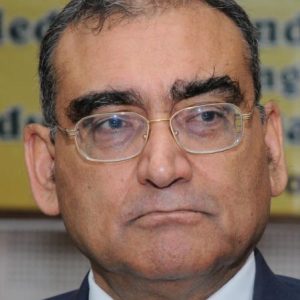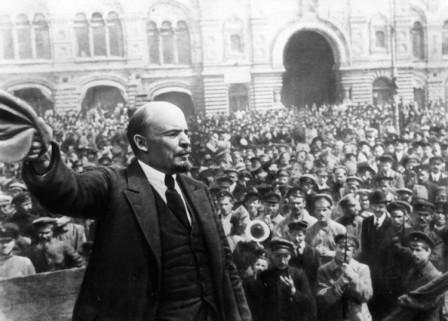

THE COLLAPSE OF the Soviet Union in 1991 may have faded from memory for many, but it holds an important significance and relevance to the topic of this article, so I will begin with it.
As is well known, after the Bolshevik Revolution of 1917, the Soviet Union was created in 1922 as a Union of 15 Republics. The idea was that in such a Union, all Republics would mutually benefit economically and be in a better position to face external dangers. This idea proved to be correct.

At that time, the Russian Republic was the most industrialized and technically advanced among all other nationalities in the Soviet Union. But instead of taking advantage of this and exploiting the weaknesses of the non-Russian Republics, the Russians gave them all technical help and expertise to industrialize and develop.
Russian engineers and scientists voluntarily used to go to the non-Russian Republics and train people there in scientific techniques. They set up engineering colleges there and taught there, living the same way as local people, often in tents, and drawing the same small salaries.
The result was that a strong sense of comradeship developed between the Russian people, the leading nation in the USSR, and the non-Russian peoples because the latter realized that the former were their benefactors.
Consequently, when Nazi Germany invaded the Soviet Union in 1941, millions of non-Russian youths, e.g., from the Muslim Republics like Kazakhstan, Tajikistan, Uzbekistan, etc., went voluntarily to fight the Germans, and many gave their lives in the war.
The Russian leader Lenin insisted that in the Constitution of the Soviet Union, there must be a right given to all nationalities to secede from the USSR if they wish to because if, instead of being helped by the Russians, they began to be oppressed by them, they should not be forcibly kept within.

After the end of the war, the Russians became oppressors and exploiters of the non-Russians, instead of being their benefactors, and this was the main reason for the collapse and disintegration of the Soviet Union in 1991. This historical event holds an important lesson for India, which I will explain.
I use the term Greater India for my vision of a reunited India consisting of India, Pakistan, and Bangladesh (and also any other neighboring countries which may voluntarily wish to join us).
Greater India is a nation, as I will presently explain, but it has several sub-nationalities too, e.g., Punjabis, Pakhtoons, Sindhis, Baloch, Bengalis, Kashmiris, Marathas, Tamils, Odias, Nagas, etc.
Most of the people living in these sub-nationalities are poor, having huge problems of unemployment, malnutrition, price rise, lack of proper healthcare, and good education, etc. It is, therefore, in the mutual interest of all these sub-nationalities to join hands and help each other instead of fighting each other in the name of religion, caste, race, or language (as our enemies want us to do) like fools.
Does Greater India have anything in common, any common culture? How can we be united if there is nothing common among us? Are we really one nation?

I have explained that Greater India is broadly a country of immigrants, like North America, with over 92% of its people descendants of immigrants (who came mainly from the northwest, though some came from the northeast too). They migrated here seeking comfortable lives.
These immigrants brought their own cultures, religions, languages, etc., which explain the tremendous diversity of India.
With the passage of time and by the intermingling of these immigrants, a common culture emerged in India, which I have called the ‘Sanskrit-Urdu culture’, and which I have explained here.
Hindustani (simple Hindi) also unites us, as explained here.
 So, broadly, we are one nation, but within us, there are several sub-nationalities. What unites us is not only our common Sanskrit Urdu culture but also the intense desire of our masses to get rid of the curse of massive poverty and unemployment.
So, broadly, we are one nation, but within us, there are several sub-nationalities. What unites us is not only our common Sanskrit Urdu culture but also the intense desire of our masses to get rid of the curse of massive poverty and unemployment.
Appalling levels of child malnourishment persist; according to the Global Hunger Index, every second child in India is malnourished. Additionally, there is an almost total lack of proper healthcare and good education for our masses.
Skyrocketing price rises of food and other essential commodities further exacerbate the challenges we face.
We can abolish these great evils which have plagued us for long only if we unite and launch a mighty historical struggle for our socio-economic emancipation, and not fight each other like fools.
Our sub-nationalities will remain in Greater India as long as they are not oppressed by others, but if they are, they must have the right to secede, as Lenin envisaged. ![]()
__________
Also Read:
Dr. Manmohan Singh: A Hero Shy of His Own Greatness
‘Yahi Hai Mera Mama’ – A commentary on Lok Sabha Elections
AAP under scrutiny; Delving into poetic justice
Hai, Modi kitna bura hai! (Agreed. But…)
Relax, My dead body won’t trouble your shoulders!
Shilanyas was a mistake, but Rajiv was not aware of unlocking Babri

Disclaimer : PunjabTodayTV.com and other platforms of the Punjab Today group strive to include views and opinions from across the entire spectrum, but by no means do we agree with everything we publish. Our efforts and editorial choices consistently underscore our authors’ right to the freedom of speech. However, it should be clear to all readers that individual authors are responsible for the information, ideas or opinions in their articles, and very often, these do not reflect the views of PunjabTodayTV.com or other platforms of the group. Punjab Today does not assume any responsibility or liability for the views of authors whose work appears here.
Punjab Today believes in serious, engaging, narrative journalism at a time when mainstream media houses seem to have given up on long-form writing and news television has blurred or altogether erased the lines between news and slapstick entertainment. We at Punjab Today believe that readers such as yourself appreciate cerebral journalism, and would like you to hold us against the best international industry standards. Brickbats are welcome even more than bouquets, though an occasional pat on the back is always encouraging. Good journalism can be a lifeline in these uncertain times worldwide. You can support us in myriad ways. To begin with, by spreading word about us and forwarding this reportage. Stay engaged.
— Team PT


Copyright © Punjab Today TV : All right Reserve 2016 - 2025 |